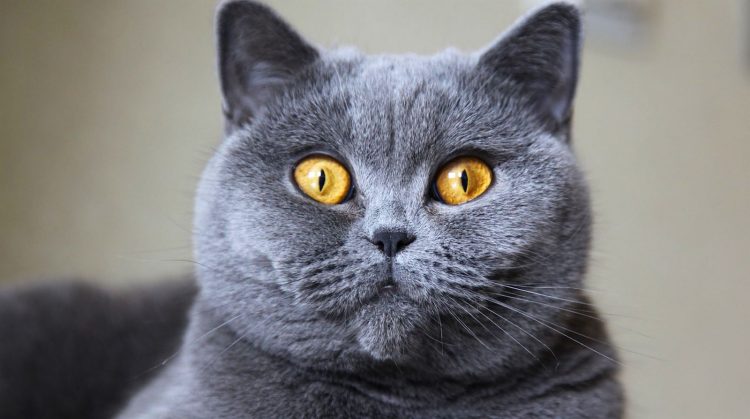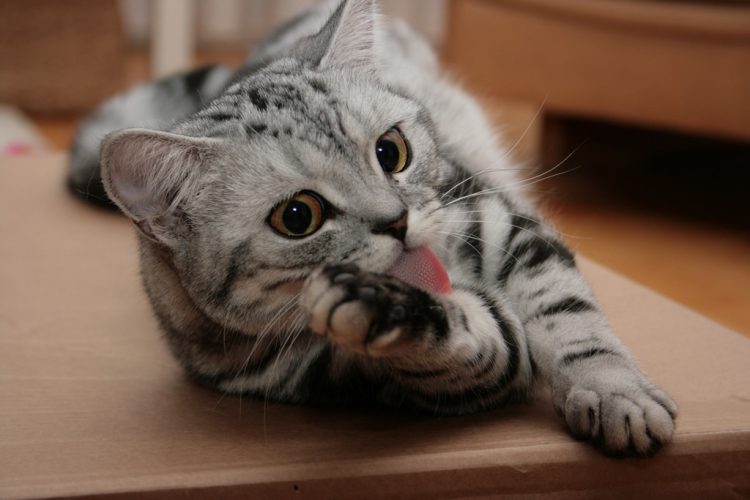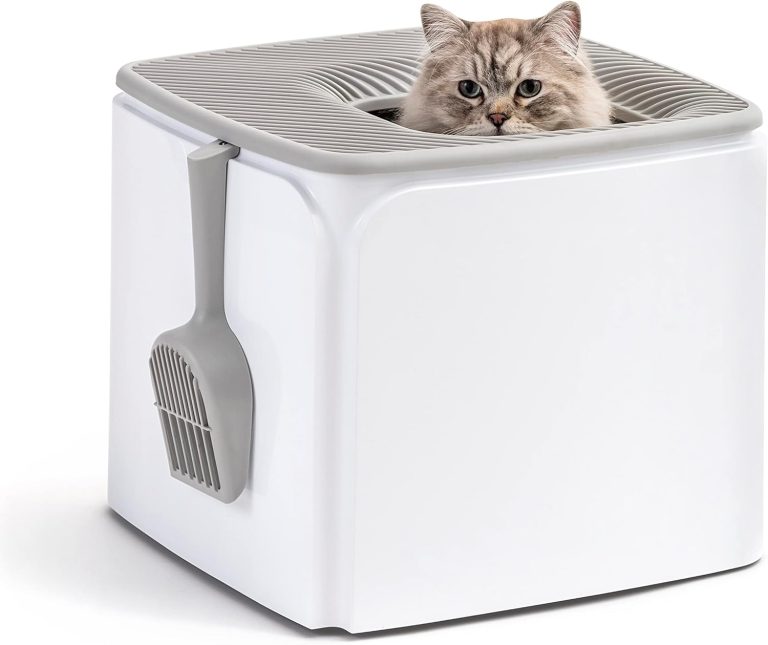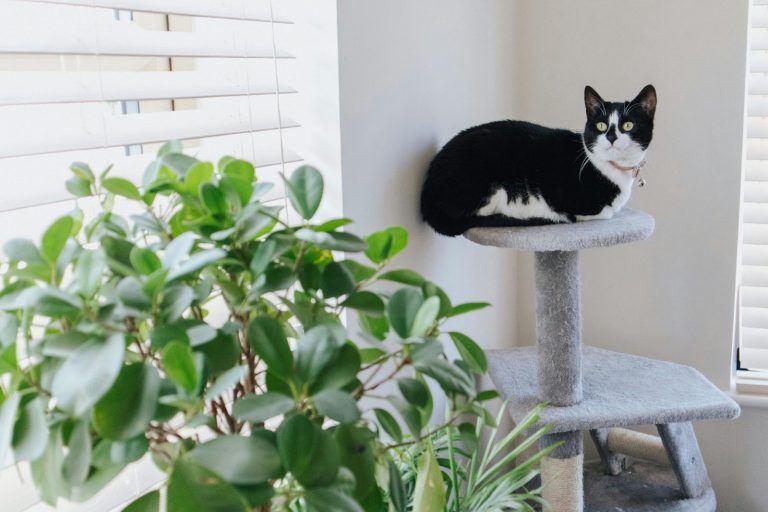5 Essential Things to Know About British Shorthair Cats
British Shorthairs are often referred to as “teddy bears” thanks to their round face and dense, furry coat.


Don’t leave your pet’s safety to chance
Sign up for Petful recall alerts today.

Key Characteristics of British Shorthair Cats
The British Shorthair is a beloved breed, often referred to as a “teddy bear” due to its distinct round face and dense coat. Here are the key characteristics that make British Shorthairs unique:
- Height: 12–14 inches
- Weight: 7–17 pounds
- Life Expectancy: 12–20 years
British Shorthairs are medium-to-large cats with a broad chest and short legs, giving them a solid, stocky appearance. Males are usually larger than females.
- Ears: Small, widely spaced, and rounded
- Eyes: Large, round, and set far apart, with colors ranging from blue to orange, green, and copper
- Tail: Thick and medium-long, tapering towards the end
- Coat: Short but dense with a thick undercoat, making it super plushy
- Coat Colors: Widely varied, but silver and blue are the most recognizable
This breed’s appearance gives off a regal and calm demeanor, which adds to their popularity among cat lovers.

The Origins of the British Shorthair
The British Shorthair has a rich history that traces back to ancient Rome. According to the Cat Fanciers’ Association (CFA), these cats were initially brought to Britain by the Romans, where they became known for their exceptional mousing abilities.
- British Shorthairs were highly adaptable, thriving as both household pets and street cats.
- Many British Shorthairs bred with native cats, contributing to their robust and versatile gene pool.
By 1871, British Shorthairs became one of Britain’s first pedigreed cats, with breeders establishing the first breed standard. The breed made its debut in England’s first official cat shows in the late 1800s.
Although they remain relatively rare in the United States, the CFA officially recognized the British Shorthair in May 1980.
For more historical insights, you can refer to British Shorthair Cats by Jill C. Wheeler.
How Friendly Are British Shorthair Cats?
British Shorthair cats are known for their easy-going and calm nature. As Jill Wheeler describes, they are “non-destructive and low-energy pets,” making them excellent companions for families.
- Affectionate and Intelligent: British Shorthairs bond closely with their families, offering affection without being overly needy. They enjoy interacting with their humans, often following them from room to room.
- Independent: Despite their affectionate nature, British Shorthairs value alone time. They’re comfortable being left alone during the day, making them a great option for busy households.
- Good with Children and Pets: These cats typically get along well with well-behaved children and other pets, from dogs to smaller animals like rodents, rabbits, and even birds.
British Shorthairs have one quirk, though—they don’t enjoy being carried or held in laps. For more information on why, they don’t like to be carried.
- Clumsy: British Shorthairs can be a bit clumsy, so don’t be surprised if they knock over a few knickknacks when attempting long leaps.
Their calm, friendly temperament and ability to blend into various family dynamics make them a popular breed.
Is the British Shorthair the Right Cat for You?

Exercise Needs of British Shorthair Cats
LOW: British Shorthair cats are relatively low-energy and placid, making them easy pets to manage in terms of exercise. However, it’s important to ensure they get regular activity to prevent obesity.
- Exercise Requirement: While British Shorthairs are not highly active, engaging them in regular play sessions helps maintain a healthy weight.
- Mental Stimulation: These cats also benefit from activities that stimulate intelligence, such as puzzle games or interactive toys.
By balancing light physical activity with mentally engaging games, you can keep your British Shorthair happy and healthy.

Grooming Needs for British Shorthair Cats
LOW: British Shorthair cats have relatively low grooming needs, making them easy to care for compared to other breeds. However, regular grooming helps maintain their dense coat and reduces shedding.
- Brushing: A weekly brushing is typically sufficient to remove loose hair and keep the coat looking neat.
- Seasonal Shedding: Expect a slight increase in shedding during warmer weather, but intensive grooming is not necessary.
Overall, British Shorthairs are low-maintenance when it comes to grooming, but regular brushing keeps their coat in excellent condition.

Health Problems in British Shorthair Cats
LOW: British Shorthair cats are generally healthy with very few prevalent health issues. This breed is known for its robust constitution, but there is one health condition that potential owners should be aware of.
- Hypertrophic Cardiomyopathy (HCM): While rare, some British Shorthairs may develop hypertrophic cardiomyopathy (HCM), a condition that affects the heart.
Aside from this, British Shorthairs are typically low-risk when it comes to serious health problems, making them a good choice for families looking for a hardy, low-maintenance pet.
Watch these tubby little British Shorthair kittens attack a veterinarian’s office with their circus-like antics:
Where to Adopt a British Shorthair Cat
British Shorthair cats are less common in the United States compared to Britain, but there are still options for adoption. Always start by checking with your local shelters and rescues before considering a breeder. You can also try Petful’s free adoption search to find available British Shorthairs near you.
If you choose to go to a breeder, it’s important to do your research:
- A responsible breeder will never try to sell or let you take home a kitten younger than 12 weeks.
- Ensure that the breeder has completed all initial vaccinations and can provide a full medical history of their animals.
By adopting or buying from a reputable source, you can ensure the health and well-being of your British Shorthair.
Frequently Asked Questions (FAQ)
How much are British Shorthair cats?
British Shorthair cats typically cost between $800 and $2,000, depending on the breeder and location.
How long do British Shorthair cats live?
British Shorthair cats have a life expectancy of 12 to 20 years.
How big do British Shorthair cats get?
British Shorthair cats usually grow to a height of 12–14 inches and weigh between 7 and 17 pounds.








